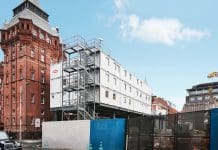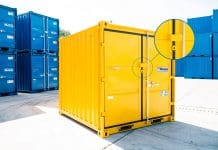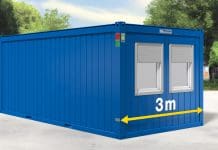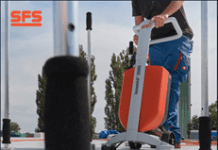OKI multifunction printers can help solve the space challenge on site says Andrew Hall, marketing manager Oki Systems UK…
As anyone in the construction business knows, the site office is no place for technology that’s fragile and unreliable. It’s also no place for large footprint devices that don’t earn their keep.
Yet, the building trade is probably one of the most demanding businesses when it comes to printers. They need to be robust and reliable – but they also need to be capable of producing high graphical quality producing top quality maps, plans and drawings at the drop of a hat.
The site office is also a real communications hub – drawings and other documents are being emailed back and forth, yet finding room for laptops, scanners, copiers and printers often means little space for the many contractors and other visitors who come and go during the day.
This is why many businesses are now choosing multifunction printers (MFPs) – devices that bring a wide range of functions such as printing, copying, scanning and faxing together into a single machine. Not only do these fit comfortably in the corner of an office, but they also cut down the paper mountain by providing functions such as scan or fax to email.
There are now also ways to ensure tighter document security by using printers with embedded software. A user can print to any device on the network. However, this will be stored until a card is swiped or password given to confirm their identity and only then will it be printed.
MFPs also help cut energy costs – and incorporate additional energy-saving functionality, including duplex printing as standard. The latest OKI devices including the MC851+ deliver further benefits with their energy-efficient digital LED technology. MFPs built on LED technology have the added bonus of having fewer moving parts which means less wear and tear and exceptional reliability.
However, despite the obvious benefits of investing in these new devices, it can sometimes be difficult to convince managers to spend the money, especially as the economic recovery continues to be slow. This is why many in the industry are looking at alternatives to major capital investment and instead opting for Managed Print Services.
Managed Print Services will help save costs by putting in place, one, all-inclusive ongoing contract which covers printers, supplies, maintenance and support. Perhaps even more valuable will be the consultancy the service provider can offer.
This will begin with an audit of existing printers and contracts, volumes printed and paper size. The services provider will then work with the business to devise a managed print and document management strategy. Tactics will range from a few tweaks, such as ensuring printers are configured and set up correctly – to larger changes such as consolidating printers and implementing new multifunction models. If appropriate, they will then work with the organisation to create a more streamlined document workflow.
The provider will also give advice on the types of devices best suited to different locations – from the office to the building site, taking into account special needs such as A3 and colour printing, the ability to print from mobiles or the need for waterproof and tear-proof documents.
With most construction companies still being prudent, managed print services can help to future-proof their spend, as the print estate can expand or contract according to need. But whatever the economic climate, smarter printing makes sense, especially in the challenging, complex and changeable environment of the construction sector.
Andrew Hall
Marketing Manager
Oki Systems UK
Andrew.Hall@okieurope.co.uk
www.linkedin.com/company/oki-uk





![[VIDEO]With cable theft on the rise, how can you protect your construction site? Copper wire rod non-ferrous metals, product metal industry, representing construction cable theft](https://www.pbctoday.co.uk/news/wp-content/uploads/2024/10/iStock-2167549051-218x150.jpg)
![[VIDEO] World’s largest luffing cranes to work on Old Oak Common The world's largest luffing crane, the M2480D, in action at Hinkley Point C](https://www.pbctoday.co.uk/news/wp-content/uploads/2024/10/Marr-M2480D-on-Hinkley-Point-C_June-2024-218x150.jpg)

![[VIDEO] World’s largest crane lifts final ring at Hinkley Point C Big Carl, the world's largest crane, lifting the final liner ring for Hinckley Point C](https://www.pbctoday.co.uk/news/wp-content/uploads/2024/10/94747-218x150.jpg)




